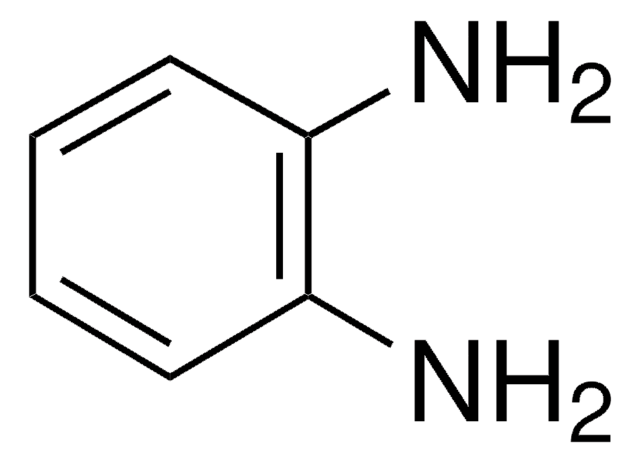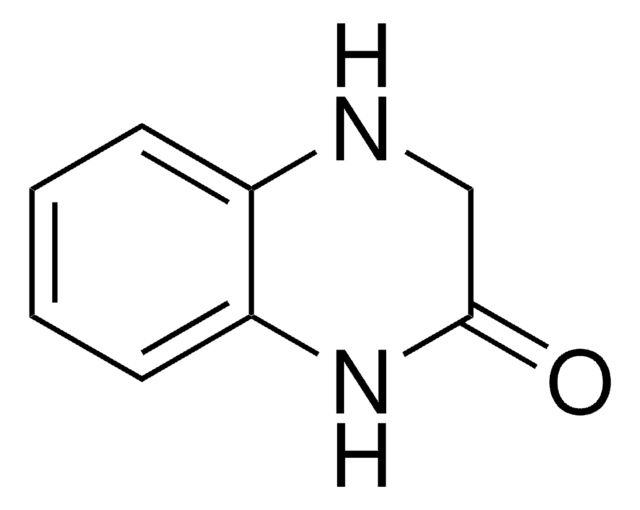Wichtige Dokumente
W511609
2-Methylquinoxalin
≥97%
About This Item
Empfohlene Produkte
Biologische Quelle
synthetic
Qualitätsniveau
Assay
≥97%
Brechungsindex
n20/D 1.613 (lit.)
bp
245-247 °C (lit.)
Dichte
1.118 g/mL at 25 °C (lit.)
Anwendung(en)
flavors and fragrances
Dokumentation
see Safety & Documentation for available documents
Nahrungsmittelallergen
no known allergens
Organoleptisch
coffee; nutty; roasted
SMILES String
Cc1cnc2ccccc2n1
InChI
1S/C9H8N2/c1-7-6-10-8-4-2-3-5-9(8)11-7/h2-6H,1H3
InChIKey
ALHUXMDEZNLFTA-UHFFFAOYSA-N
Suchen Sie nach ähnlichen Produkten? Aufrufen Leitfaden zum Produktvergleich
Verwandte Kategorien
Allgemeine Beschreibung
Haftungsausschluss
Signalwort
Warning
H-Sätze
Gefahreneinstufungen
Eye Irrit. 2 - Skin Irrit. 2 - STOT SE 3
Zielorgane
Respiratory system
Lagerklassenschlüssel
10 - Combustible liquids
WGK
WGK 3
Flammpunkt (°F)
224.6 °F - closed cup
Flammpunkt (°C)
107 °C - closed cup
Persönliche Schutzausrüstung
Eyeshields, Gloves, type ABEK (EN14387) respirator filter
Hier finden Sie alle aktuellen Versionen:
Besitzen Sie dieses Produkt bereits?
In der Dokumentenbibliothek finden Sie die Dokumentation zu den Produkten, die Sie kürzlich erworben haben.
Kunden haben sich ebenfalls angesehen
Global Trade Item Number
| SKU | GTIN |
|---|---|
| W511609-100G | 4061838183651 |
| W511609-1KG | 4061838094094 |
| W511609-5KG | 4061838183668 |
| W511609-SAMPLE | 4061838183675 |
Unser Team von Wissenschaftlern verfügt über Erfahrung in allen Forschungsbereichen einschließlich Life Science, Materialwissenschaften, chemischer Synthese, Chromatographie, Analytik und vielen mehr..
Setzen Sie sich mit dem technischen Dienst in Verbindung.








